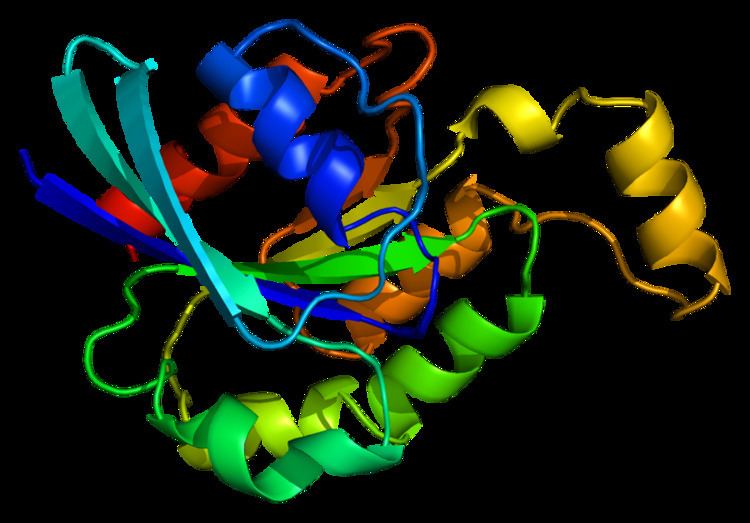Entrez 389 | Ensembl ENSG00000155366 | |
 | ||
Aliases RHOC, ARH9, ARHC, H9, RHOH9, RhoC, ras homolog family member C External IDs MGI: 106028 HomoloGene: 90945 GeneCards: RHOC | ||
RhoC (Ras homolog gene family, member C) is a small (~21 kDa) signaling G protein (more specifically a GTPase), and is a member of the Rac subfamily of the family Rho family of GTPases. It is encoded by the gene RHOC.
Contents
Mechanism and function
It is prenylated at its C-terminus, and localizes to the cytoplasm and plasma membrane. It is thought to be important in cell locomotion. It cycles between inactive GDP-bound and active GTP-bound states and function as molecular switches in signal transduction cascades. Rho proteins promote reorganization of the actin cytoskeleton and regulate cell shape and motility. RhoC can activate formins such as mDia1 and FMNL2 to remodel the cytoskeleton.
Overexpression of RhoC is associated with cell proliferation and causing tumors to become malignant. It causes degradation and reconstruction of the Extracellular Matrix (ECM) which helps cells escape the tissue they are currently in. It enhances cell motility giving it the ability to become invasive. It has been found to have a direct relationship to advanced tumor stage and metastasis, with increases in stage being related to increases in RhoC expression. RhoC-deficient mice can still develop tumors but these fail to metastasize, arguing that RhoC is essential for metastasis. It has also been found to enhance the creation of angiogenic factors such as VEGF, which is necessary for a tumor to become malignant. In a study by Vega, RhoC was knocked out which resulted in cells spreading out wide in all directions. When RhoC was disabled, the cell's abilities to move in a specific direction and migrate was impaired. It also reduced the cell's speed of movement, because it was difficult, and sometimes impossible, to polarize the cell.
Associated Signaling Pathways
RhoC expression has been associated with several signaling pathways and effectors. Here is a list of the ones found so far:
Types of Cancer RhoC has been studied in
RhoC has been found to be overexpressed in:
Potential Therapies
RhoC small interfering RNA (siRNA) have been used in studies to successfully inhibit proliferation of some invasive cancers RhoC can be used as a biomarker for judging the metastatic potential of tumors One study used "recombinant adenovirus mediated RhoC shRNA in tandem linked expression" to successfully inhibit RhoC It has been found that RhoC expression is not important for embryogenesis but it is only important for metastasis, which would make it a good target for treatments.
